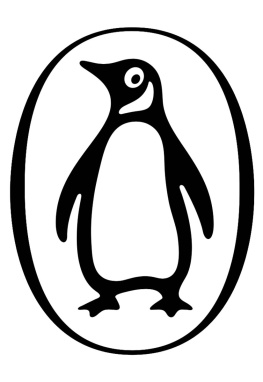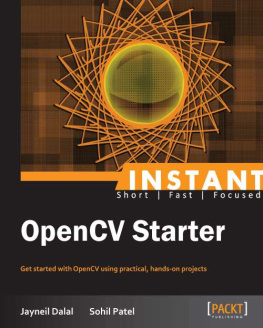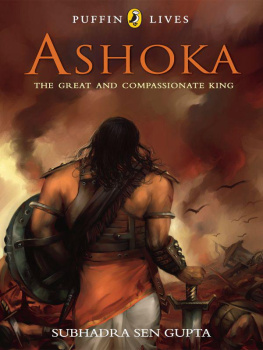Roshen Dalal - The Puffin History of India, Volume 1
Here you can read online Roshen Dalal - The Puffin History of India, Volume 1 full text of the book (entire story) in english for free. Download pdf and epub, get meaning, cover and reviews about this ebook. year: 2014, publisher: Penguin Books Ltd, genre: Religion. Description of the work, (preface) as well as reviews are available. Best literature library LitArk.com created for fans of good reading and offers a wide selection of genres:
Romance novel
Science fiction
Adventure
Detective
Science
History
Home and family
Prose
Art
Politics
Computer
Non-fiction
Religion
Business
Children
Humor
Choose a favorite category and find really read worthwhile books. Enjoy immersion in the world of imagination, feel the emotions of the characters or learn something new for yourself, make an fascinating discovery.

- Book:The Puffin History of India, Volume 1
- Author:
- Publisher:Penguin Books Ltd
- Genre:
- Year:2014
- Rating:3 / 5
- Favourites:Add to favourites
- Your mark:
- 60
- 1
- 2
- 3
- 4
- 5
The Puffin History of India, Volume 1: summary, description and annotation
We offer to read an annotation, description, summary or preface (depends on what the author of the book "The Puffin History of India, Volume 1" wrote himself). If you haven't found the necessary information about the book — write in the comments, we will try to find it.
The Puffin History of India, Volume 1 — read online for free the complete book (whole text) full work
Below is the text of the book, divided by pages. System saving the place of the last page read, allows you to conveniently read the book "The Puffin History of India, Volume 1" online for free, without having to search again every time where you left off. Put a bookmark, and you can go to the page where you finished reading at any time.
Font size:
Interval:
Bookmark:


Aarohi Phadke, Arvinder Chawla and Arun Pottirayil
Maps by
Suman Tarafdar

PUFFIN BOOKS
Roshen Dalal is the author of Religions of India: A Concise Guide to Nine Major Faiths, Hinduism: An Alphabetical Guide, The Illustrated Timeline History of the World and the bestselling two-volume The Puffin History of India for Children. She has an MA and PhD in Ancient Indian History from Jawaharlal Nehru University, New Delhi. She has worked on various research projects, taught at school and university level, and written numerous articles and book reviews. She lives in Dehradun.
The Puffin History of India
Volume 2 (1947 to the Present)
The Puffin History of the World
Volume 1
To my mother
Nergis Dalal

This book is a result of my years of teaching at the Rishi Valley School in Andhra Pradesh. The young students were lively, curious and full of questions but there were no books on Indian history which they could easily read and understand.
This book therefore has been written with young people in mind. It has been divided into relatively short chapters, with numerous subheads to make for easy reading. While concepts and ideas have been included, the book is also information based and therefore will serve as a source of reference.
While writing this history I have kept certain factors in mind it should be accurate, incorporating recognized viewpoints of history; it should introduce young people to different sources, including archaeology; it should give equal emphasis to the history of south India, an area usually neglected. Finally, it should be something young people can read and understand themselves.
I have used various different sources which are too many to list here. However, some of the main secondary sources are Romila Thapar, A History of India Vol I; Percival Spear, A History of India Vol II; A. L. Basham, The Wonder That Was India, Pt I; S.A.A. Rizvi, The Wonder That Was India, Pt II; R.C. Majumdar, et. al., An Advanced History of India; the Bharatiya Vidya Bhavan series edited by R.C. Majumdar on the History and Culture of the Indian People; Bridget and Raymond Allchin, The Rise of Civilisation in India and Pakistan; Bipan Chandra, Amales Tripathi and Barun De, Freedom Struggle; Bipan Chandra, et. al., Indias Struggle for Independence; Nilakanta Sastri, History of South India; the series of history textbooks published by the NCERT, and the Social Science textbooks published by the Ekalavya group in Hoshangabad. In addition I have utilized my own research as well as other original sources.
I should like to thank Prof. Romila Thapar for going through the manuscript and making valuable suggestions, many of which I was able to incorporate, my editor Anubha Doyle for her dedicated work in giving the book its final shape and form, and my family for their support and encouragement. Thanks are also due to Aarohi Phadke for illustrating the book and Suman Tarafdar for preparing the maps. Most of all I would like to thank the students of the Rishi Valley School whom I taught or came in contact with between 1988 and 1994.
This new edition incorporates material from sources read over a number of years, which are too numerous to mention. Statistics for the pre-Independence period vary in different sources and those in chapter 61 are based mainly on the Gazetteer of India of the Publications Division.
I should like to thank Paul Vinay Kumar of Penguin India for encouraging me to work on a new edition, Udayan Mitra and Ajanta Guhathakurta of Penguin India for taking care of editing, design and production, Arvinder Chawla and Arun Pottirayil for the new illustrations, and Suman Tarafdar for additional maps. I should also like to thank Chanda Rani Akhouri for data on women in the electoral process, and my family for their help and support.
Dates can be confusing. Here is an explanation of some of the terms used.
This year is AD 2003. One AD was two thousand and two years ago. What was before that? We count backwards from there, and we call the years before that, BC. So 1 BC is one year before 1 AD, that is 2003 years ago. Hundred BC is 2102 years ago and 250,000 BC is 252,002 years ago. This is just one way of dating; there are other types of calendars as well.
Circa AD 250 or AD 350 means that the exact date is not known but is somewhere close to that.
A century is a hundred years. The tenth century AD refers to the hundred years between 901 and 1000. The nineteenth century refers to the hundred years between 1801 and 1900.
In this book states such as Uttar Pradesh or Madhya Pradesh are sometimes mentioned. This is only to give the reader an idea of where places are located. These modern states with their present boundaries came into being after independence.
Place names keep changing. In this book we have mainly used the place names that were current before independence. In a few cases new names have been used. Some of the main old and new names are given below.
| Old | New |
| Bombay | Mumbai |
| Calcutta | Kolkata |
| Madras | Chennai |
| Cochin | Kochi |
| Calicut | Kozhikode |
| Quilon | Kollam |
| Tanjore | Thanjavur |
| Burma | Myanmar |
| Carnatic | Karnatak |
| Poona | Pune |
H istory is the story of the past, of people and how they lived. People dont live in space, at least not yet. They live on land and so their story is influenced by the nature of the land where they live. People also affect the land so we have to look at the history of India along with the character and history of the land, the changes brought about by people and by natural forces.
We live on the Indian subcontinent, also called South Asia. This includes the countries of Pakistan, India, Bangladesh, Nepal, Bhutan, Sri Lanka, the Maldives and other islands. The history of Pakistan, India and Bangladesh is closely connected. Before 1947 the whole area occupied by these three countries was called India. The word India came from the Greek word Indoi meaning the people who lived near the river Indus.
Once upon a time, there were no cities, factories, roads or railways. In fact, there were no people.
It is difficult to imagine that India of the past, before people cut the forests, polluted the rivers and built big cities. It must have been a beautiful land, covered with thick forests, full of animals and birds, with clear sparkling rivers, its treasures beneath the surface of the earth, unseen and unknown. But can you imagine an India which was once an island, with no Himalayas, with rivers flowing in different directions, where the areas of Dehra Dun, Darjeeling and Kathmandu were beaches with palm trees? Geologists, who study the earths crust, tell us that long ago, thats how India was.
Font size:
Interval:
Bookmark:
Similar books «The Puffin History of India, Volume 1»
Look at similar books to The Puffin History of India, Volume 1. We have selected literature similar in name and meaning in the hope of providing readers with more options to find new, interesting, not yet read works.
Discussion, reviews of the book The Puffin History of India, Volume 1 and just readers' own opinions. Leave your comments, write what you think about the work, its meaning or the main characters. Specify what exactly you liked and what you didn't like, and why you think so.









